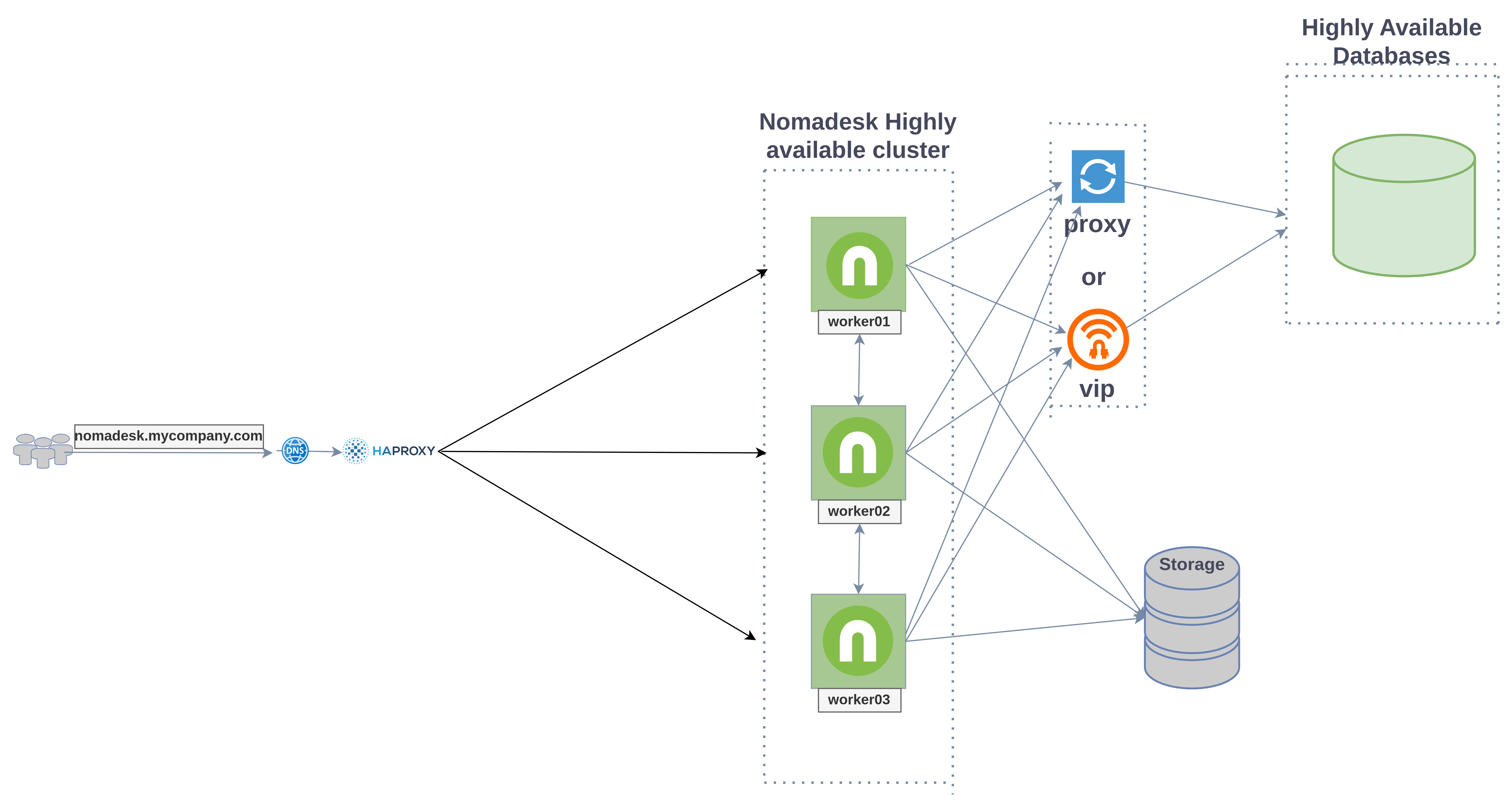Introduction
Highly Available Nomadesk Appliance (HA Nomadesk Appliance)
Installing Nomadesk as a high available appliance and adding more nodes to a Nomadesk deployment enhances its availability and fault tolerance, ensuring uninterrupted operation even in the face of network disruptions, hardware failures, or software issues on a hosting server. This document provides a comprehensive guide on configuring your Nomadesk appliance software to achieve high availability, enabling a resilient and reliable infrastructure.
High Available Nomadesk Appliance Architecture Overview

The architecture overview for a highly available nomadesk appliance.
Requirements
Verify your hardware and software meet these essential requirements for installing Nomadesk. You can find more information here Nomadesk Installation Requirements
High Availability Requirements
Integration and Importance of Components in High Availability
High availability requires seamless coordination between several components to ensure continuous service without single points of failure. The following requirements are crucial for high availability
Odd Number of Nodes (Quorum)
This is crucial for quorum-based systems to prevent "split-brain" scenarios where the system might operate in inconsistent states. An odd number of nodes ensures a clear majority for decision-making, maintaining system consistency. Refer to Quorum distributed computing on Wikipedia.
Proxy
The proxy is central to managing high availability. By intelligently routing requests to available nodes, it avoids directing traffic to failed or offline nodes. The proxy also balances loads effectively, ensuring no single node is overwhelmed.
DNS
DNS resolves service names to IP addresses dynamically, playing a critical role in redirecting users to healthy nodes or proxies. This prevents downtime when individual nodes or components fail, ensuring continuous availability from the user’s perspective.
External Storage
External storage ensures data consistency across all nodes by serving as a shared storage solution. It prevents data silos and ensures that any node can access the required data, even if other nodes fail.
Highly Available Databases
The database layer is the backbone of data integrity and consistency. Replication ensures that every node in the HA setup has access to up-to-date data. Failover mechanisms allow database services to switch to a backup instance without user impact, ensuring continuous operation.